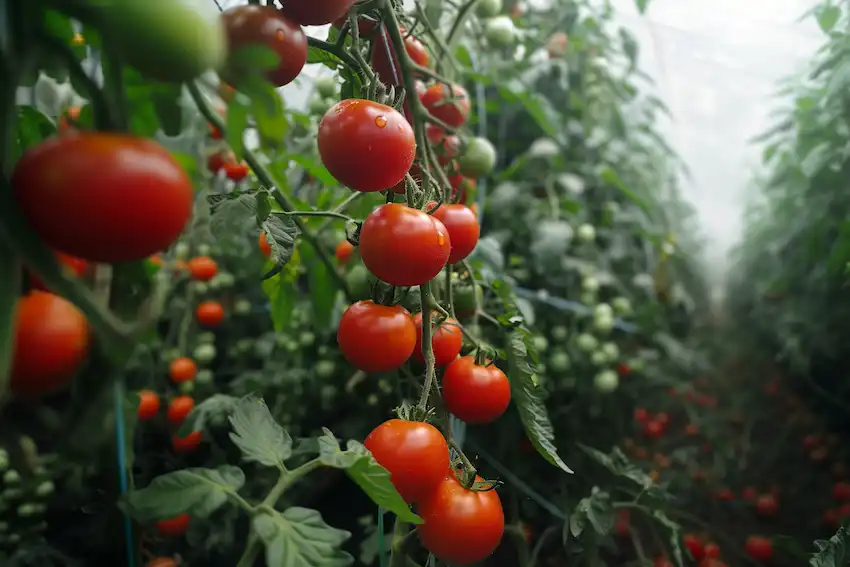Rethinking Tomato Sucker Pruning for a Bountiful Harvest
Tomato gardening is a cherished activity for many, offering the promise of juicy, flavorful tomatoes straight from the vine. However, there’s a long-standing debate about whether to prune tomato suckers. While some gardeners remove all suckers to promote better fruit production, others argue that leaving some can lead to a more abundant harvest. Here, we explore why you should reconsider pruning all tomato suckers and provide tips for maximizing your tomato yield.
Understanding Tomato Suckers
Tomato suckers are small shoots that grow in the axils between the stem and a leaf branch. While often pruned to conserve the plant’s energy for fruit production, these suckers can also develop into strong branches that bear fruit, potentially contributing to a larger overall yield.
Why You Shouldn’t Prune All Tomato Suckers
1. Increased Photosynthesis
Each sucker has leaves that contribute to the plant’s photosynthesis process. More leaves can mean more energy for the plant to produce fruit. Allowing some suckers to grow can increase the plant’s ability to produce tomatoes.
2. More Fruit-Bearing Branches
Suckers can grow into substantial branches that produce their own flowers and fruits. By removing all suckers, you limit the number of branches that can bear fruit, potentially reducing your overall harvest.
3. Better Sun Protection
Leaves from suckers can shade the tomatoes, protecting them from sunscald—a condition where fruits get sunburned, leading to white or yellow patches that affect taste and texture.
4. Enhanced Disease Resistance
Unpruned plants tend to be bushier, improving air circulation around the base and reducing the incidence of soil-borne diseases. Pruned plants can become sparse, making them more susceptible to such issues.
Best Practices for Managing Tomato Suckers
Instead of removing all suckers, consider a balanced approach that allows your plants to thrive.
Selective Pruning
Rather than removing every sucker, selectively prune only those that overcrowd the plant or take up too much energy. Focus on removing suckers that are very low on the plant or those that interfere with airflow and sunlight.
Timing is Key
If you decide to prune, do it early in the morning when the plant is less stressed. This timing allows ample time for healing during the day, helping to prevent disease spread.
Use Clean Tools
Always use clean, sterilized pruning tools to prevent disease transmission. Sterilize tools with rubbing alcohol or a bleach solution between cuts, especially if working on multiple plants.
Support Your Plants
When allowing suckers to grow, ensure adequate support with stakes, cages, or trellises. This prevents branches from breaking under the weight of the fruit.
Mulching
Apply mulch around the base of your tomato plants to retain moisture, suppress weeds, and improve soil health. Organic mulches like straw or grass clippings can enrich the soil as they decompose.
Watering
Consistent moisture is crucial for tomatoes, but avoid overwatering, which can lead to root rot. Aim for deep, infrequent watering to keep the soil consistently moist but not waterlogged. Drip irrigation or soaker hoses are ideal for providing even moisture.
Fertilizing
Feed your tomatoes with a balanced fertilizer that includes essential nutrients like nitrogen, phosphorus, and potassium. Organic options such as compost or fish emulsion offer a slow-release source of nutrients. Avoid high-nitrogen fertilizers that promote excessive foliage growth at the expense of fruit production.
Pest and Disease Management
Regularly monitor your plants for signs of pests and diseases. Early detection is key to managing problems before they escalate. Use organic pest control methods, such as introducing beneficial insects, applying neem oil, or using insecticidal soaps.
Conclusion
Reconsidering the practice of pruning all tomato suckers can lead to a more abundant and healthier tomato harvest. By selectively pruning, ensuring proper plant support, and following best practices for watering, fertilizing, and pest management, you can optimize the growth and yield of your tomato plants. Embrace a balanced approach to pruning, and enjoy a bountiful harvest of delicious, homegrown tomatoes!
